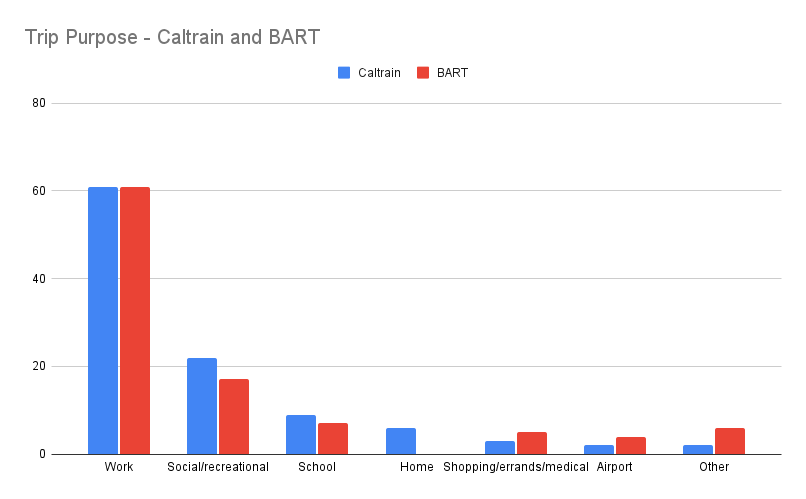Recent customer surveys of BART and Caltrain riders show similar patterns in trip purposes. For both brands, 61% of trips are work commute trips. About a quarter of trips using both services are for social, recreational, and other non-commute purposes. The agencies ask the questions slightly differently so the responses aren’t completely comparable.
In the wake of the pandemic, the share of work commuting has declined for both brands. The share of BART trips for work commuting declined from 70% in 2018 to 61% in 2022, while the share of Caltrain trips for work commuting declined from 77% in 2016 to 61% in 2022 (the agencies did earlier surveys in different years). Ridership for both services has been recovering gradually since the steep pandemic decline, with faster ridership recovery outside of peak weekday commute periods.
For both brands, ridership recovery strategies include attracting commuters back with institutional passes (including BART for the first time, and with the first ever regional all-agency pass); and supporting a greater diversity of trips with a less peak-focused schedule.

